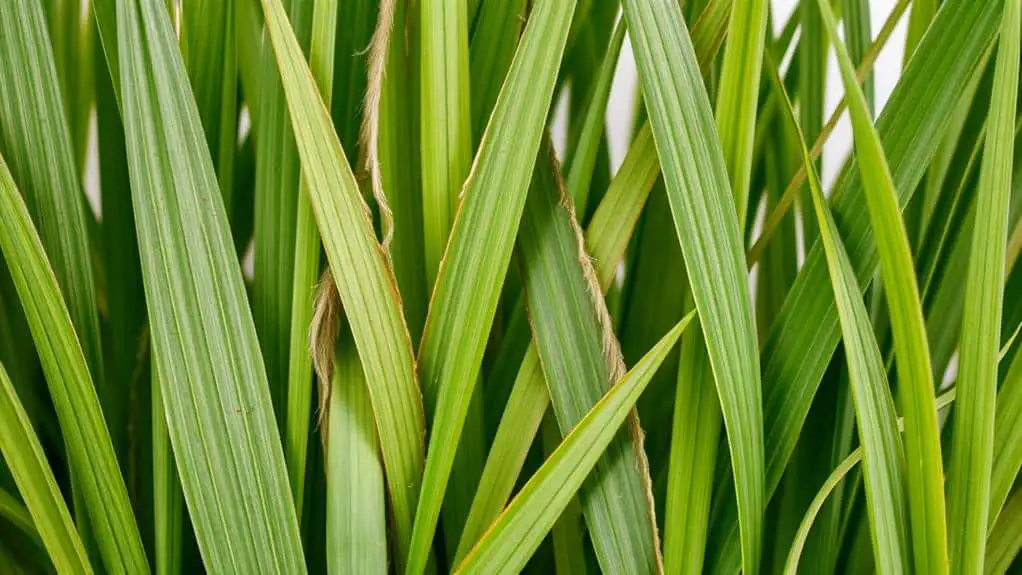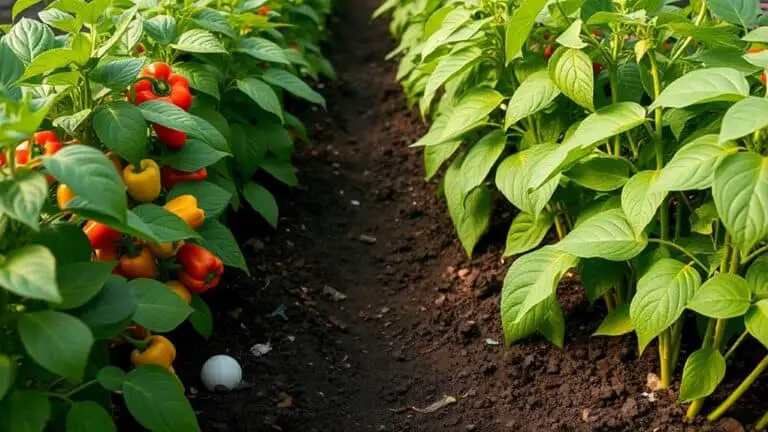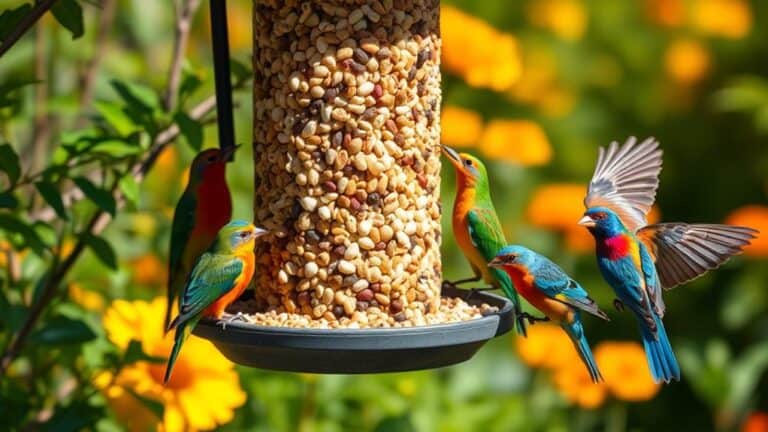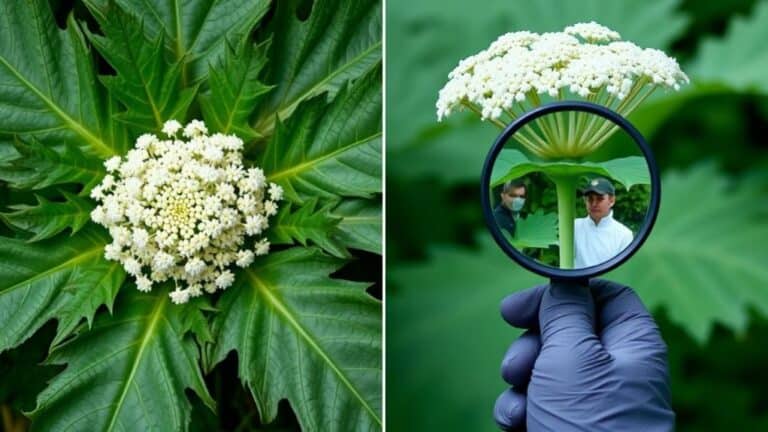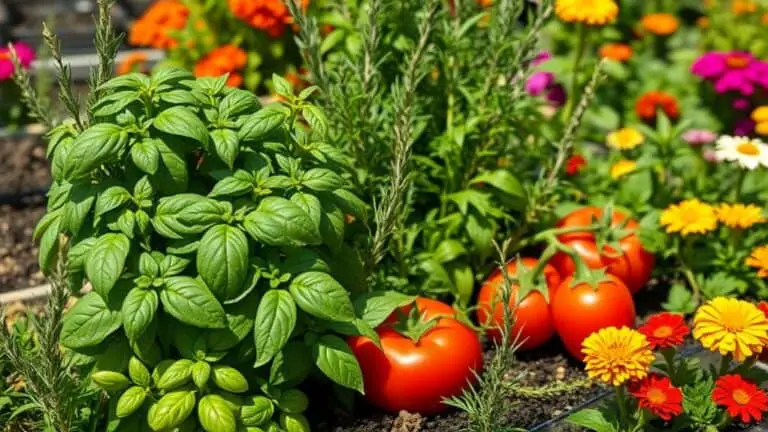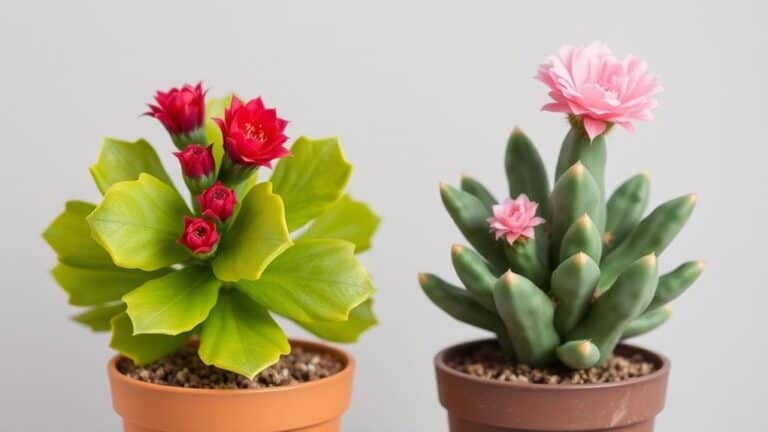How To Identify What Type Of Grass You Have
When trying to identify what type of grass you have in your lawn, it's crucial to start by considering your regional climate. Different grasses thrive in various conditions, so knowing whether you have a cool-season or warm-season variety can narrow down your options considerably. But that's just the beginning. You'll also need to examine the blades closely, noting their width, shape, and even the way they unfold. Don't forget to look at the ligule, collar, and auricles for additional clues. Understanding these details can make a big difference in how you care for your lawn. Curious about the next steps?
Know Your Grass Growing Region

Understanding your grass growing region is essential for achieving a lush and healthy lawn. Knowing your region helps you identify whether cool-season grasses, warm-season grasses, or a mix of both will thrive.
Cool-season grasses perform best in the northern U.S., growing vigorously in fall and spring. Warm-season grasses, on the other hand, flourish in the southern U.S., peaking in summer.
If you live in the transitional zone, you're fortunate. This unique area supports both grass types due to its varied climate conditions.
Successful lawn care hinges on matching your grass types to your growing region's climate. Proper grass identification guarantees your lawn remains resilient and beautiful throughout the year.
Common Cool-Season Grasses
When it comes to cool-season grasses, you've got several solid options that can thrive in northern climates.
These grasses are known for their ability to withstand cooler temperatures and provide lush, green lawns. Here are some common grasses you might consider:
- Kentucky Bluegrass: Known for its dense growth and V-shaped blades, it's great for most lawns but not deep shade.
- Tall Fescue: With wider blades, it offers excellent drought and heat resistance, making it perfect for athletic fields.
- Perennial Ryegrass: Germinates quickly and has shiny, pointed blades, often mixed with Kentucky Bluegrass.
- Fine Fescue: Ideal for shaded areas with its fine-textured blades, but struggles in heat and drought.
- Bentgrass: Less common but adds a soft, dense turf.
Choosing the right cool-season grass guarantees a healthy, vibrant lawn.
Common Warm-Season Grasses
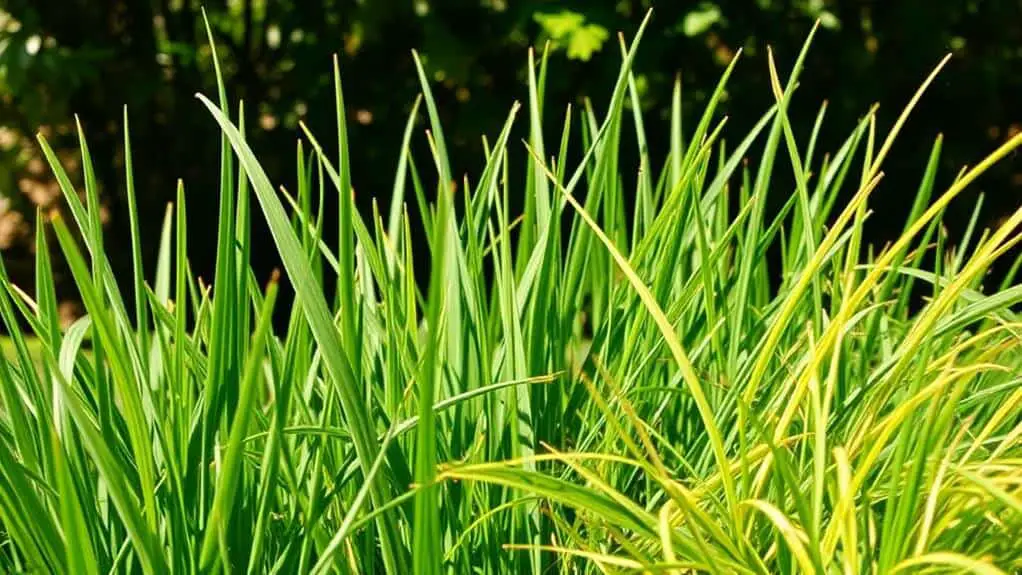
Selecting the right warm-season grass for your lawn can make all the difference in achieving that lush, green carpet during the hotter months.
Bermudagrass is a fantastic choice if you need a tough grass that thrives in full sun and spreads quickly.
Zoysiagrass, with its dense, carpet-like growth, offers great heat and cold tolerance.
If you prefer low-maintenance, Centipedegrass forms a dense turf with a coarse texture and doesn't need frequent mowing.
Bahiagrass excels in heat and drought tolerance, perfect for poor soils.
Finally, St. Augustinegrass, especially the Floratam variety, is great for warm-arid regions, needing ample moisture.
Each warm-season grass has unique traits, so consider your climate and lawn needs before choosing.
Grass Blade Width and Shape
Identifying grass types becomes simpler when you pay attention to the width and shape of the blades.
Fine-bladed grasses like creeping red fescue have hair-like blades less than 1/16 inch wide. Wide-bladed varieties such as tall fescue have broader, pointed blades up to 3/16 inch wide.
The shape of grass blades can also help identify different grass types:
- Sharp-pointed blades: Found in Bermuda grass.
- Rounded blades: Common in St. Augustine grass.
- V-shaped, pointed blades: Seen in Kentucky bluegrass.
- Hair-like blades: Characteristic of fine fescue grasses.
- Pointed blades with visible veins: Typical of perennial ryegrass.
Vernation Types

Understanding vernation types can greatly enhance your ability to identify grass species. Vernation refers to how the youngest leaves are arranged within the grass bud, which is essential for identification.
There are two main types: folded and rolled. Folded vernation, where leaves fold over each other, is common in cool-season grasses like Kentucky bluegrass and centipedegrass.
On the other hand, warm-season grasses such as Zoysia grass often display rolled vernation, where leaves roll up in a cylindrical shape. Observing these patterns can help you differentiate between cool-season and warm-season grasses.
Growth Habits and Patterns
When it comes to grass identification, growth habits and patterns offer essential insights. By observing how grass grows, you can determine its type and how to care for it.
Here are some key points to take into account:
- Spreading: Some grasses, like Bermuda and Centipede, spread through stolons or rhizomes.
- Clumping: Kentucky bluegrass and tall fescue grow in bunch-like clumps.
- Cool-season grasses: These thrive in spring and fall.
- Warm-season grasses: These flourish in summer.
- Growth rate: Perennial ryegrass grows quickly, while Zoysiagrass is slower.
Understanding these growth habits helps with grass identification and maintenance needs.
For example, spreading grasses might need more space, while clumping types could require different mowing practices. Knowing whether you have cool-season or warm-season grass aids in scheduling the right care.
Color and Texture Examination
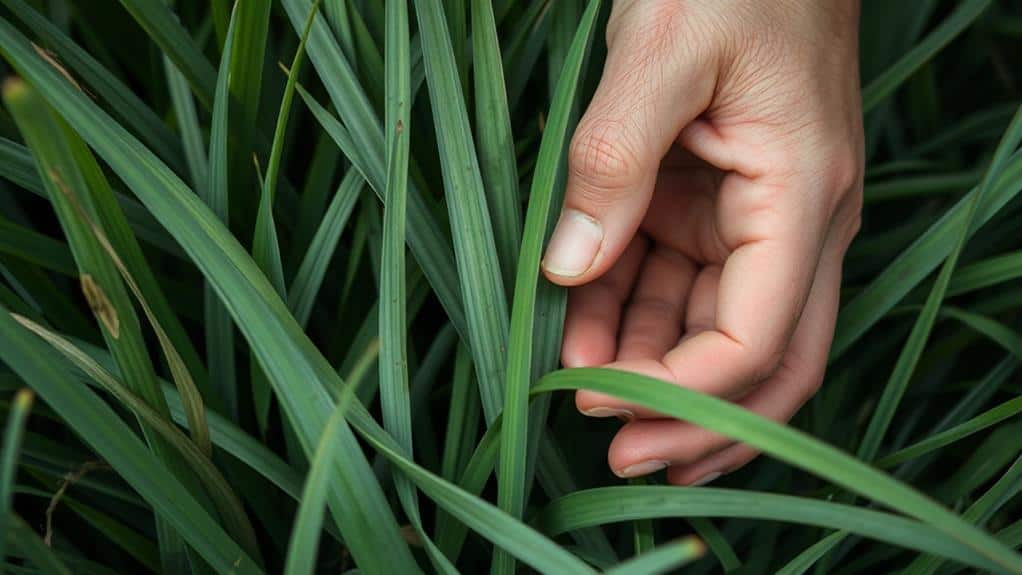
Examining the color and texture of grass can reveal critical clues to its identity.
To identify your grass type, start by looking at the grass color. Kentucky bluegrass is vibrant green, while buffalograss has a bluish-green hue.
Grass texture is also key. Fine fescue has hair-like, soft blades, whereas Bermuda grass feels sharper. Blade width matters too. St. Augustine grass has broad blades, about 1/4 inch wide, while perennial ryegrass blades are narrower at 1/8 inch.
Don't forget seasonal color changes. Cool-season grasses might turn brown in summer, unlike warm-season grasses that stay green longer.
Identify by Ligule and Collar
Let's take a closer look at the ligule and collar to help you identify different grass types more easily.
The ligule, found where the leaf blade meets the sheath, can be absent, hairy, or membranous, while the collar, located between the leaf blade and stem, varies in color and texture.
Ligule Types Overview
Identifying grass types becomes much easier once you understand the ligule and collar characteristics. The ligule, found at the junction of the leaf blade and sheath, can be absent, hairy, or membranous. This feature is key for identification.
For instance, Kentucky bluegrass has a membranous ligule, while perennial ryegrass sports a hairy one.
Here are some key points to help you:
- Ligule: Check if it's membranous or hairy.
- Collar: Observe this area for additional clues.
- Auricles: Look for these claw-shaped structures.
- Leaf blade: Note its shape and texture.
- Grass types: Identify using a combination of these features.
Key Collar Features
Why is the collar so essential in identifying grass types? The collar, located between the leaf blade and the stem, offers significant clues for identification. Its characteristics—whether smooth, hairy, or ligulate—help differentiate grass species.
For example, Kentucky bluegrass usually has a membranous ligule, while tall fescue features a hairy ligule. Additionally, zoysia grass has a dense collar, unlike the finer collar of fine fescue.
Understanding these features aids in identifying grass types, which is important for effective lawn care. Observing the ligule and collar can reveal important traits, making it easier to manage your lawn.
Vernation and Leaf Blade
Building on the importance of the collar in grass identification, another key factor is vernation, which reveals how the youngest leaves are arranged within the bud.
Vernation can be folded or rolled, like in Kentucky bluegrass or zoysiagrass, respectively.
Let's also consider the leaf blade, which varies in width and shape and helps in identifying different grass types.
Ligules, found at the junction of the leaf blade and sheath, can be hairy, membranous, or absent, adding essential details.
Don't forget about auricles, those tiny claw-like structures at the base of leaf blades.
Here are key points to remember:
- Vernation: Folded or rolled
- Leaf Blade: Width and shape matter
- Ligules: Hairy, membranous, or absent
- Collar: Varies in appearance
- Auricles: Presence or absence
Understanding these elements will make grass identification easier.
Local Assistance for Identification

When it comes to identifying the grass in your lawn, local county extension agents are an invaluable resource. They offer expertise tailored to regional climates and specific grass types.
Many extension services provide free or low-cost soil testing and lawn consultations, helping you understand your lawn's unique needs. Agricultural universities often run extension programs with workshops or seminars on grass identification and lawn care.
Additionally, online resources, like university websites and gardening forums, offer visual guides and tips. Don't forget about garden centers and nurseries; their knowledgeable staff can also help with grass identification and care recommendations.
With these resources, you're well-equipped to identify your grass and keep your lawn healthy.
Tailored Lawn Care Maintenance
Tailored lawn care maintenance starts with correctly identifying your grass type, enabling you to cater specifically to its growth habits and environmental needs.
When you know your lawn grasses, you can adjust your maintenance routines accordingly.
- Cool-season grasses like Kentucky bluegrass need a mowing height of 4-6 inches.
- Warm-season grasses such as Bermudagrass thrive with more frequent watering and a mowing height of 1-3 inches.
- Understanding your grass's drought tolerance helps prevent over-irrigation.
- Observing changes in grass color and texture can signal when adjustments are needed.
- Tailored lawn care includes specific watering, fertilization, and mowing practices.
Identify grass type first, and then follow these tailored steps to keep your lawn healthy and vibrant.
Frequently Asked Questions
How Can I Determine What Kind of Grass I Have?
To determine your grass type, I observe grass characteristics like leaf texture and color, growing conditions, root system, and climate adaptability. I also consider maintenance needs and seasonal behavior. These clues help me identify the grass accurately.
Is There an App to Identify Grass Types?
Yes, there are grass identification apps like PlantSnap and PictureThis that use plant recognition technology. These mobile gardening tools offer lawn care tips, grass type resources, and user-friendly interfaces, helping with landscape design and environmental impact assessment.
How Do I Know What Kind of Grass Seed to Use?
To choose the right grass seed, I consider my region's climate—whether it's cool-season or warm-season. I also evaluate soil type, sunlight requirements, and maintenance needs to guarantee ideal turf quality and the right grass seed characteristics.
What Is the Most Common Type of Yard Grass?
The most common yard grass depends on your region. In the North, cool-season varieties like Kentucky bluegrass thrive, while warm-season options like Bermudagrass dominate the South. Consider texture, growth patterns, climate influence, and pest resistance for lawn maintenance.
Conclusion
Now that you know how to identify your grass type, you're well on your way to a healthier lawn. Just remember to contemplate your regional climate and take a close look at the blade characteristics and growth habits. Don't hesitate to seek local help if you need it. With these tips, you'll feel more confident in caring for your lawn. Happy gardening, and enjoy watching your grass thrive!

